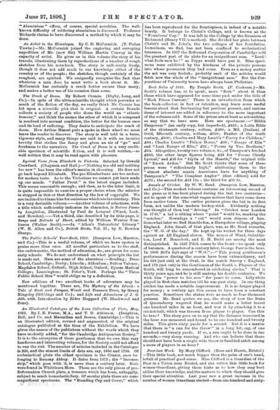An Illustrated Catalogue of the Loan Collection of Plate, May,
1895. By J. E. Foster, M.A., and T. D. Atkinson. (Deighton, Bell, and Co. and Macmillan and Bowes, Cambridge.)—This is an illustrated edition, revised and augmented, of the original catalogue published at the time of the Exhibition. We have given the names of the publishers without the words which they have modestly added, "for the Cambridge Antiquarian Society." It is to the enterprise of these gentlemen that we owe this very handsome and interesting volume, for the Society could not afford to run the risk. The number of articles included in the Catalogue 228, and the utmost limits of date are, say, 1350 and 1799. Of ecclesiastical plate the oldest specimen is the Censer, once be longing to Ramsay Abbey. It dates from 1375 ; the " Incense- ship," which goes with it, is more than a century later. Both were found in Whittlesea Mere. These are the only pieces of pre- Reformation Church plate, a treasure which has been, unhappily, subject to much iconoclastic fury. Of secular plate there are some magnificent specimens. The "Standing Cup and Cover," which has been reproduced for the frontispiece, is indeed of a notable beauty. It belongs to Christ's College, and is known as the " Foundress' Cup." It was left to the College by the Countess of Richmond (Henry VIL's mother). She divided her plate between Christ's and St. John's, the two colleges of her foundation. Iconoclasm, we find, has not been confined to ecclesiastical treasures. In 1837 the Reformed Corporation of Cambridge sold the greatest part of its plate for an insignificant sum. " Lord ! what fools men be ! " as Pepys would have put it. Nine speci- mens were exhibited by the kindness of the private persons into whose possession they had come. Even as a money matter the act was very foolish ; probably each of the articles would fetch now the whole of the " insignificant sum." But the Cor- porations of University towns have always been Philistine.
















































 Previous page
Previous page